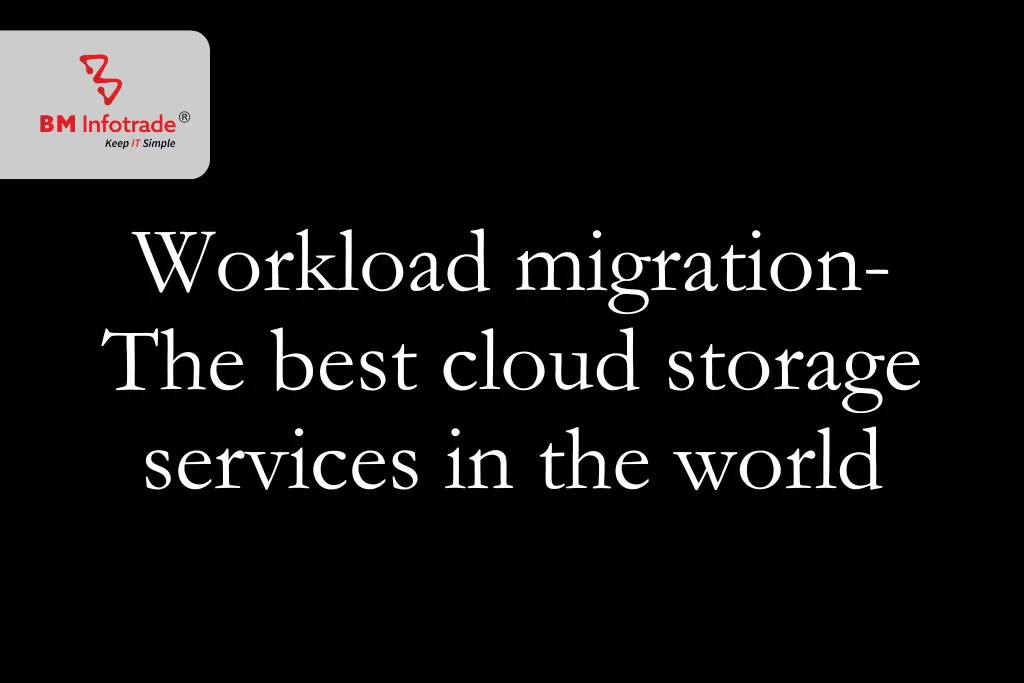Workload migration- The best cloud storage services in the world
Discover the leading cloud storage services for workload migration. Find out which options are best for managing and moving your data efficiently.

Workload migration- The best cloud storage services in the world
Table of Contents
Workload Migration refers to the process of moving a workload, often a program or service, from one infrastructure setting to another. This may involve transitioning from an on-premises datacenter to a public cloud, shifting between different cloud providers, or relocating from the cloud back to on-premises infrastructure.
When businesses migrate to the cloud, their on-premises servers' databases, and backup and restore processes, and workloads are transferred to one or more cloud providers. This can be done for a variety of reasons, chief among them the use of highly scalable infrastructure managed by a cloud provider, the placement of workloads in particular global regions, the reduction of the cost of fixed capacity infrastructure, the use of a pay-per-use pricing model, or the exploitation of cloud-native services that might not be supported by existing infrastructure.
The significance of workload migration
Applications are used by companies across all sectors to fuel efforts at digital transformation. They want to update the applications in their fleet. Many individuals visualize the future state of their organizations as one where operations are conducted through cloud-based, containerized applications employing microservices architecture. These applications are designed to operate seamlessly with DevOps methodologies and are often deployed across various cloud platforms.
The vision is frequently clearly defined, but the path to the vision is not. Businesses find that these obstacles are frequently harder to overcome and take more time than anticipated. There are enormous technical, organizational, and operational obstacles.
The drive towards application modernization and the adoption of enterprise cloud services is fueled by the need for the portability and migration of workloads. Applications migration enables businesses to benefit from the features and cost-performance ratios of various cloud service providers.
Businesses can leverage the capability to migrate applications, allowing them to take advantage of diverse cloud providers' features and cost-performance ratios. It also enables migration back to on-premises infrastructure when it makes the most sense for business or technical reasons.
Without workload migration, businesses risk being tied to a single cloud provider and subject to their terms of service, pricing, and performance standards.
How does workload migration operate?
Before beginning workload migration, organizations must make sure the staff members are qualified. Since cloud providers operate very differently from on-premises data centers and local virtual machines, training and education on the new target environment should be taken into account to ensure services can be properly managed and applications will run without a hitch (VMs). For both cloud-based and on-premises components to be completely secure, new security protocols must be adopted.
The speed and cost of migration efforts are heavily influenced by the compatibility between the source and target platforms, as well as the selection of optimal tools for the task.

Read more: Load Balancing- Unlock your new digital world
What are the advantages of shifting your workload?
Cost
Workload migration to a cloud provider can result in significant savings. Organizations do not need to make expensive infrastructure purchases or upgrades; they only pay for what they use. Instead, as part of their business model, cloud providers upgrade and modernize their infrastructure, and organizations can benefit from these advancements by simply continuing to use their cloud services.
Many businesses discover that moving workloads to the cloud allows them to save money on real estate expenses as well as operational costs for power and cooling. Organizations spend nearly two-thirds of their IT budget on maintenance, according to a recent Deloitte study; these costs are covered by cloud providers, and organizations instead pay a stable monthly fee for their workloads.
Workload balancing and scalability
Cloud service providers make it easier to scale up and down in response to shifting demand and commercial considerations. Additionally, some businesses incorporate workload balancing techniques into their migration strategy, enabling load balancing between on-premises infrastructure and the cloud, between clouds, or between all of the aforementioned.
Security
Security Organizations that recognize that there is a shared responsibility and that both the provider and the user must do their part can make cloud providers more secure than on-premises infrastructure. Cloud workloads benefit from the most stringent physical security regulations currently in use as organizations adopt zero-trust security strategies at an increasing rate.
Cloud providers must exhibit the strictest security procedures and adhere to the widest range of governmental regulatory requirements because they are inherently multi-tenant and provide services to clients in the financial, medical, and government sectors across the globe.
Many built-in security features are also provided by the majority of cloud service providers, including security analytics, routine updates, cross-enterprise visibility, and preventing unauthorized access to the devices hosting your workloads.
Availability
Workloads in the cloud can be accessed from any location with a secure network connection to the cloud because of their very nature. Many cloud migrations are carried out purely for this advantage.
Access from any location and on any device is a crucial component of the digital transformation. The recovery point objective (RPO) and recovery time objective (RTO) after a data loss or failure can be driven to almost zero levels with the help of cloud-based backup or archives, which also speeds up restores.
Modernization
Organizations aiming to modernize their applications through the adoption of microservices and APIs embrace a cloud-native approach to development and deployment. Businesses that take advantage of application modernization are more likely to retain both because modern, containerized applications are created, deployed, and improved in the cloud.
Read more: Cloud architecture: Workload on the cloud
Conclusion
Data migration gives us the ability to combine all of our data into a single storage system, like a cloud data warehouse. Businesses opt to migrate their data for various reasons. They might have to redesign the whole thing, update the databases, build a new data warehouse, or combine new data from an acquisition or another source.




![Cloud Licensing and Compliance Made Easy [All-in-One Bundle]](https://bminfotrade.com/assets/upload/blog/21851766642757.png)


Anshul Goyal
Group BDM at B M Infotrade | 11+ years Experience | Business Consultancy | Providing solutions in Cyber Security, Data Analytics, Cloud Computing, Digitization, Data and AI | IT Sales Leader